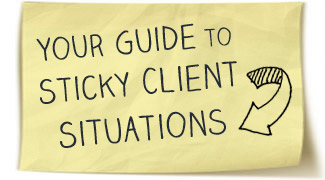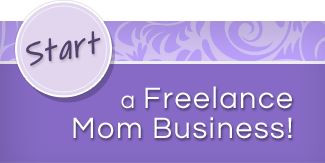Do you dream of working from home? What will it take to make that dream a reality?
As a parent, starting a work-from-home business, such as freelancing, seems like a good idea. Working from home can simplify your otherwise hectic life. It may even give you a chance to spend more of your precious time with your family.
While you may want to work from home, do you actually know how to get started? Most parents don’t. In this post, I give you three simple steps to help you find the right business for you.
Step 1: Find Your Business Idea
Good businesses start with good ideas. Work-at-home businesses are no different. To start a business, you need to know what that business will offer (usually a product or service).
This is where many would-be business owners get stuck. They have no idea what type of products or services to offer. However, business ideas are all around us.
You can find some great business ideas by exploring:
- Your passions
- Your past experience
- Your training
For example, imagine a teacher who creates an educational video for preschoolers or an accountant who uses her training to provide freelance accounting services from her home. Both of these individuals turned to their own interests and backgrounds to start their work-from-home businesses.
You can find more information on finding business ideas from the Entrepreneur Business Idea Center at Entrepreneur.com. Also, look at Lori Meyer’s questions in this Problogger post, Finding Your Passion For Your Ideal Business.
Step 2: Find Your Market
Now that you have a business idea, you must determine whether there’s a market for it. If there’s no market for your product or services, your work-from-home business idea won’t succeed.
Here are two ways to learn about market demand:
- Look for competitors. If there are some competitors it means there is probably market demand. Be careful though, if there are too many competitors, then the market may be tough to break into. If there are no competitors it may mean that there is no demand OR that your idea is unique.
- Discover what people will pay. While you probably can’t afford to hire a focus group, you need to know what people will pay for your product or services. Try informally asking your peers or use the Internet to conduct a low cost poll.
Jerome Gentolia, writing at VentureStab blog, offers more great suggestions for tackling this step in this post, Will People Buy Your Product?: A Look Into Market Validation And Market Fit. Laura Lake at About.com: Marketing provides another great resource to help you find your market, Defining Your Niche Market.
Step 3: Determine Whether Your Idea Is Feasible
Now that you have determined whether there is a market for your business idea and know how much your potential customers are willing to pay, you are ready to take the final step.
You need to decide whether your idea is feasible.
To be feasible, a business idea must be doable. An idea is doable if you can exceed the cost of executing it (earn a profit). If the idea costs more to carry out than you can earn, then you will operate at a loss.
(Keep in mind, many businesses do operate at a loss during their early years– but at some point, you need to earn a profit.)
Here are just a few of the costs your business needs to cover:
- Material costs (for products). How much do the materials to make your product cost?
- Labor costs. How much will you pay someone (or yourself) to make the product?
- Shipping costs. How much will you pay to get the product to your customers?
- Online costs/Facility costs. Do you need to pay for a website? Do you need to pay for a facility to make or store your product?
- Administrative costs (include advertising, billing, payment processing, etc.). How much does advertising cost? Will you pay someone to do administrative tasks such as billing, bookkeeping, and payment processing.
Another consideration is time. A product that takes too long to produce may not be practical.
Let’s take another look at one of our previous examples. Imagine that the teacher finds that the cost for producing his education video comes to $50 per video. However, his research shows that parents are only willing to pay $30 per video. At least initially, his educational video business will not be profitable.
For even more information on how to determine whether your business will be profitable, review the Breakeven Analysis: Know When you can Expect a Profit tool from the U.S. Small Business Association.
Where Do You Go from Here?
If you’re currently thinking about starting a work-from-home business, use these steps to find your business idea and then to decide whether it is feasible.
Have you worked through the steps above? What did you discover?
Have you already started your work-from-home business? How did you find your idea?
Share your answers in the comments.
Laura Spencer has been a freelance writer for over ten years. Before that, she worked in the corporate world as a technical and marketing writer for over ten years. You can find her at WritingThoughts.com.






